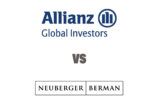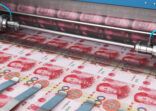Investors should be aware of the risks associated with holding high yield bonds in an environment where growth is slowing globally, according to Manu George, Singapore-based senior investment director for Asian fixed income.
“We see inherent risks in [high yield] as the economy slows down globally, as this could challenge high yield corporates’ financial sustainability,” he said during a recent visit in Hong Kong.
“High yield is most affected [in this kind of environment], so when we look at valuations of high yield relative to investment grade, there are better relative valuations from investment grade.”
This explains why the Schroder ISF Global Credit Income Fund, managed by Patrick Vogel, invests in global corporate bonds — and roughly 70% of its assets are in investment grade, according to George.
The fund holds 659 positions with an average credit rating of BBB. At the sub-investment grade level, about 12% of the portfolio is in BB-rated bonds and 8% in B-rated, the factsheet shows.
Other fund managers and private bankers have also had cautious evaluations of high yield bonds.
Ken Taubes, chief investment officer at Amundi, believes high yield is too expensive and sees more attractive opportunities outside the asset class.
Citi Private Bank’s global investment committee also prefers investment grade bonds as the bank has become more cautious over strong inflows into high yield this year, Julie Koo, head of the private bank’s investment management sales, said previously.
Europe-heavy exposure
Although bonds from US-based Citibank represent the fund’s largest single position at 2.2%, the portfolio has around 34.4% of its assets in Europe. With the UK, the allocation goes up to 52.2%, according to the fund factsheet.
George explained that the fund manager sees more opportunities in Europe than in the US, which accounts for 23.4% of the portfolio.
“Spreads are attractive in European investment grade, and if you hedge the currency back to the dollar, you get a pick up. What you get in that pick up in US dollar terms is a better yield than what you get from US investment grade,” he explained.
More specifically, some European holdings in the top ten include Spain government bonds and Netherlands-based Tennet Holdings, an electricity transmission operator, the factsheet shows.
He added that US corporate leverage has increased over the past few years. “You are also getting a lot more interest rate risk than credit risk,” he added.
George also believes that there are pockets of opportunities in the UK as it is a more under-researched market compared to the US. UK positions in the top ten include Santander UK and Western Power Distribution.
“We also feel that the whole discussion on Brexit is making investors more wary than they should be, but there are actually good-quality UK investment grade companies that are well-shielded because they have strong balance sheets and have a lot of cash levels.”
George noted that the product does not take currency risk, which means that investments in euro- or sterling-denominated bonds are hedged back to the US dollar.
“This solution is focused on credit investing, so there is no currency risk complicating the fund’s exposures.”
Effective yield is currently 4.82%, according to the factsheet.
The Schroder ISF Global Credit Income Fund versus its sector and the Bloomberg Barclays Aggregate Corporates Index


















